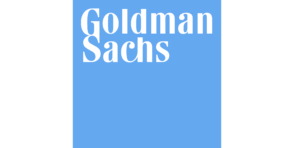A new note from Goldman Sachs says that all four large European cap reinsurers have underperformed the market so far in 2022.
 The firm said that this was because of higher inflation, higher weather losses, potential Russia/Ukraine losses, and COVID losses.
The firm said that this was because of higher inflation, higher weather losses, potential Russia/Ukraine losses, and COVID losses.
It wrote: “However, we have seen some of these issues and headwinds being put behind the sector since Q1, with COVID mortality losses diminishing; inflation, whilst remaining a concern, is largely under control, companies already took action in Q421 and pricing assumptions reflect a more cautious view on inflation; and the range of outcomes from Ukraine/Russia losses appears to be narrowing (albeit still highly uncertain).”
Goldman Sachs also drew attention to Munich Re and Hannover Re, which have re-rated in the past month, as well as what the firm said was outperforming the sector average over the same time period.
It added: “We believe Hannover Re and Munich Re are well positioned and have the capital and capacity to take advantage of the hard market in property cat reinsurance. With low betas, conservative investment portfolios, limited market risks and a track record of delivering even in difficult environments, we reiterate our Buy ratings.”
Meanwhile, it said that SCOR has de-rated further in the last month after higher-than-expected nat cat and agriculture losses, notwithstanding that SCOR has been reducing its cat exposure since Q321.
It wrote: “Investors are concerned about how effective the cat exposure reduction is on improving earnings stability, especially when nat cat pricing is entering a hard market and the group’s peers are increasing exposures here. We believe Q3 results could indicate whether this cat exposure reduction strategy is paying off, although, in our view, the company is reducing cat renewals as pricing is becoming more attractive and companies are starting to get paid for the risk. As a result, we prefer the companies such as our Buy-rated stocks Munich Re and Hannover Re that can take advantage of the hard market and write more business as pricing becomes more attractive, not less, and whilst SCOR’s valuation appears cheap valuation vs peers on our estimates, we remain Neutral.”
Goldman Sachs went on to say that Beazley and Hiscox were so far showing strong underlying results reflecting the benefits of the hard-cycle earning through to its P&L. With continued strong reinsurance price increases, we expect reinsurers to deliver strong hard-market returns for the next 24-36 months.
It said: “However, reinsurers have been under pressure due to the high level of weather losses over the past five years and have yet to demonstrate the benefit of the hard-market coming through to earnings and ROEs. In our view, this remains a ‘show-me story’ for the reinsurers and the market needs a period of benign losses or at least an average catastrophe year (in line with cat budgets) to help them re-rate.”
Overall, H1 2022 has been fairly quiet, said Goldman Sachs, with companies reporting natural catastrophe activities as being fairly benign and losses within budget. It predicted that the rest of the year would follow the same pattern.
It added: “Moreover, the increasing worries around climate change should support further price increases and demand for nat cat covers. Indeed, we saw another strong renewals season in the mid-year, with reinsurers reporting stronger nominal rate increases than April and January renewals. In addition, inflation also helps to prolong the hard cycle, supporting incremental premium growth. The reinsurance cycle (particularly nat cat) has lagged the primary insurance cycle, but we believe the reinsurance cycle (due to weather losses) could be longer lasting.”
It concluded: “Overall, we believe the sector, trading materially below its peak multiples (except for Swiss Re our Sell rating), even in the midst of a hard (improving) market in both insurance and reinsurance, looks attractive, and that stocks could regain their historical defensiveness. At this point of the cycle, we would expect the stocks to be trading nearer to peak multiples than average multiples.”


